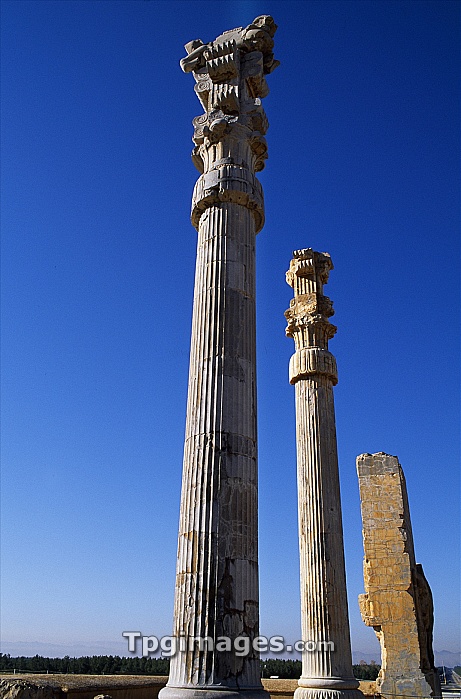
Decorative capitals surmounting fluted columns, each sixty feet high, which supported the cedarwood ceiling of the palace of Persepolis, near Shiraz. In about 512BC, Darius I (the Great) started constructing this massive and magnificent palace complex to serve as a summer capital for the observance of Nou Ruz (New Year), and the rebirth of nature, when the desert springs into bloom, a spectacle which has inspired Persian art and poetry over the centuries. Envoys from the vassal states of the Achaemenian empire - including Elamites, Parthians, Egyptians and Babylonians - came to Persepolis to pay tribute to their king. Persepolis was completed by a host of subsequent kings, including Xerxes I and II, and Artazerxes I, II and III, over a period of 150 years. The city sits on a shelf on the slopes of Mount Rahmat and at one time it was surrounded by an 18 metre high wall. The original name was Parsa. Persepolis was burnt to the ground during Alexander the Great's time in 331BC. The ruins were rediscovered and excavated in the 1930's.
| px | px | dpi | = | cm | x | cm | = | MB |
Details
Creative#:
TOP06631322
Source:
達志影像
Authorization Type:
RM
Release Information:
須由TPG 完整授權
Model Release:
NO
Property Release:
NO
Right to Privacy:
No
Same folder images:

 Loading
Loading